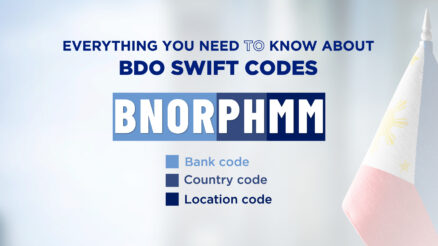Repaying a loan online refers to the process of making loan payments through an online platform, such as a lender’s website or mobile app. This is a convenient and efficient way for borrowers to manage their loan obligations and ensure that payments are made on time.
With online loan repayment, borrowers can typically make payments using their bank account or a credit or debit card. They may also have the option to set up automated bank transfers to make regular payments on a set schedule. Some lenders may also offer the ability to make payments directly from a mobile money account if they have partnered with a mobile money provider.
When repaying a loan online, it is important for borrowers to keep track of all payments and any associated fees. Some online loan repayment platforms may provide instant confirmation of payments, as well as a record of all transactions. This helps borrowers to keep track of their loan balance and ensure that payments are being applied correctly.
Overall, repaying a loan online is a convenient and efficient way for borrowers to manage their debt obligations and reduce the risk of missed payments. It is important for borrowers to choose a reputable lender and be aware of any fees or charges associated with online loan repayment.
4 Ways to repay a loan online in Philippines
Repaying a loan online can be a convenient and efficient way to manage your debt obligations. Here are some common ways to repay a loan online:
- Automated bank transfer: Many lenders allow borrowers to set up automatic payments from their bank account, which are debited on a set schedule (e.g. monthly). This option helps ensure that payments are made on time and reduces the risk of missed payments.
- Online bill payment: Some lenders offer online bill payment options through their website or mobile app. You can log in to your account, view your loan balance and payment schedule, and make payments directly from your bank account or with a credit or debit card.
- Mobile money transfers: If your lender has partnered with a mobile money provider, you may be able to make payments directly from your mobile money account.
- Direct Debit: Some lenders may allow you to set up a direct debit, where they can automatically debit the agreed upon amount from your bank account on a recurring basis.
It is important to note that different lenders may offer different payment options, so it’s important to check with your lender to see what options are available to you. Additionally, it’s a good idea to keep a record of all payments, either by printing receipts or making note of transactions in your account history.
Automated bank transfer
Automated bank transfer is a common and convenient way to repay a loan. This method involves setting up a recurring transfer from a borrower’s bank account to the lender’s account, usually on a specific date each month. The transfer is automated, meaning that it occurs automatically without the borrower having to manually initiate the transfer each time.
To set up an automated bank transfer, borrowers typically need to provide the lender with their bank account information and authorize the lender to make recurring transfers from their account. The amount of each transfer is usually determined by the loan agreement and is a combination of the principal (the original amount borrowed) and the interest charged on the loan.
One of the benefits of using automated bank transfer to repay a loan is that it is a reliable and convenient way to ensure that payments are made on time. The borrower does not have to manually initiate each transfer, so there is less risk of missed payments or late fees. Additionally, because the transfers are automated, there is no need for the borrower to worry about forgetting to make a payment or missing a deadline.
However, it is important for borrowers to ensure that they have sufficient funds in their bank account to cover the loan repayments. If there are insufficient funds in the account, the transfer may be declined, and the borrower may incur additional fees or penalties. Additionally, borrowers should be aware of any fees or charges associated with automated bank transfers, and should carefully review their loan agreement to understand their repayment obligations.
Online bill payment
Online bill payment is a method of repaying a loan using an online platform, such as a bank’s online banking service or a bill payment service. With this method, borrowers can make loan payments directly from their bank account or by using a credit or debit card.
To use online bill payment to repay a loan, borrowers typically need to create an account with the lender or bill payment service, and provide their bank account information or credit card details. Once the account is set up, the borrower can log in and make payments at any time, either one-time payments or recurring payments.
One of the benefits of using online bill payment to repay a loan is the convenience and flexibility it provides. Borrowers can make payments from the comfort of their own home or office, without having to visit a bank or loan provider. Additionally, online bill payment platforms often provide real-time updates and payment confirmations, so borrowers can be sure that their payments have been made and credited to their loan account.
However, it is important for borrowers to be cautious when making online payments and to take steps to protect their personal and financial information. They should also be aware of any fees or charges associated with online bill payment and carefully review their loan agreement to understand their repayment obligations.
Overall, online bill payment is a convenient and efficient way to repay a loan, but borrowers should take the necessary precautions to ensure the security of their personal and financial information and be aware of any associated fees or charges.
Mobile money transfers
Mobile money transfers are a type of electronic payment that allow users to make transactions using their mobile device. In the context of loan repayment, this option allows borrowers to make payments directly from their mobile money account to their lender.
To use mobile money transfers for loan repayment, the borrower must first have a mobile money account with a provider such as GCash, PayMaya, or Smart Money... The borrower then needs to link their mobile money account to their loan account with the lender, either through the lender’s website or mobile app, or by visiting a physical branch.
Once the accounts are linked, the borrower can log in to their mobile money account and initiate a transfer to their lender. The payment will typically be credited to the borrower’s loan account within a few minutes.
Mobile money transfers offer a convenient and secure way to make loan repayments, as the transactions are encrypted and protected by multiple layers of security. Additionally, many mobile money providers offer features such as real-time balance updates and transaction history, which can help borrowers keep track of their loan repayments and overall financial situation.
However, it’s important to note that mobile money transfers may come with fees, such as transaction fees or foreign exchange fees if the loan is denominated in a different currency from the borrower’s mobile money account. Borrowers should carefully review the terms and conditions of their mobile money provider, as well as any fees associated with their loan, to ensure that this payment option is the most cost-effective for their situation.
Direct Debit
Direct debit is a method of repaying a loan by authorizing the lender to automatically collect payments from a borrower’s bank account. This is a convenient and efficient way to ensure that loan payments are made on time and reduces the risk of missed payments.
To set up a direct debit to repay a loan, borrowers typically need to provide the lender with their bank account information and authorize the lender to make recurring transfers from their account. The amount of each transfer is usually determined by the loan agreement and is a combination of the principal (the original amount borrowed) and the interest charged on the loan.
One of the benefits of using direct debit to repay a loan is that it is a reliable and convenient way to ensure that payments are made on time. The borrower does not have to manually initiate each transfer, so there is less risk of missed payments or late fees. Additionally, because the transfers are automated, there is no need for the borrower to worry about forgetting to make a payment or missing a deadline.
However, it is important for borrowers to ensure that they have sufficient funds in their bank account to cover the loan repayments. If there are insufficient funds in the account, the transfer may be declined, and the borrower may incur additional fees or penalties. Additionally, borrowers should be aware of any fees or charges associated with direct debit, and should carefully review their loan agreement to understand their repayment obligations.
Overall, direct debit is a convenient and efficient way to repay a loan, but borrowers should take care to ensure that they have sufficient funds in their account and are aware of any associated fees or charges.
8 Tips on repaying a loan online in Philippines
Here are some tips for repaying a loan online:
- Choose the right method of repayment: Make sure to choose the right method of repayment that suits your financial situation, such as direct debit, online bill payment, or mobile money transfer.
- Set up automatic payments: Automating your loan repayments can help you avoid missed payments and late fees. You can set up automatic payments through direct debit or online bill payment.
- Keep track of your repayments: Regularly monitoring your loan account online can help you stay on top of your repayments and ensure that they are credited to your account on time.
- Stay within your budget: Make sure that you have enough funds in your account to cover your loan repayments, and consider setting up alerts to help you stay within your budget.
- Pay extra when you can: If you have extra funds available, consider making extra payments to reduce your interest charges and pay off your loan faster.
- Be cautious with personal information: When making online loan repayments, be cautious with your personal and financial information and take steps to protect it from fraud or theft.
- Read the terms and conditions: Carefully read the terms and conditions of your loan agreement, including the interest rates, fees, and repayment schedule, so that you fully understand your repayment obligations.
- Contact your lender if you have trouble: If you encounter any difficulties making your online loan repayments, contact your lender as soon as possible to discuss your options.
By following these tips, you can make online loan repayments effectively and efficiently, while also taking steps to protect your personal and financial information.




